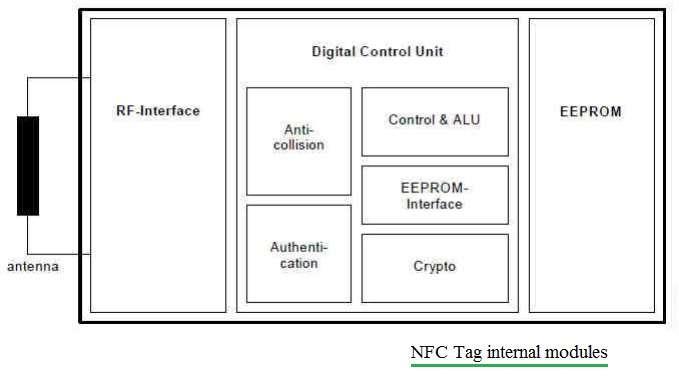NFC Tag Readers: Principles, Block Diagram, and Differences
Advertisement
Near Field Communication (NFC) has become an essential part of modern wireless communication, enabling devices to exchange information by simply bringing them close together. NFC tag readers play a crucial role in reading and processing the data stored in NFC tags, used across industries like retail, healthcare, and transportation.
This guide describes the working of NFC tag readers, breaking down their core components with a detailed block diagram for a clearer understanding of the technology behind this seamless communication. It also highlights the difference between NFC tags and NFC readers.
Working of NFC Tag and Reader
An NFC network consists of two devices: an initiator and a target.
There are two basic modes of operation in an NFC network, known as active and passive.
- NFC Active Mode: Both the initiator and target devices have their own power supply or battery for operation.
- NFC Passive Mode: One of the NFC devices has its own power while the other device is fully passive and derives its power from the active-powered device.

Both NFC tags and NFC readers communicate using a 13.56MHz frequency for operation. They use ASK modulation for modulating the data to be transmitted before being translated on the RF carrier of 13.56MHz. The NFC devices utilize the concept of electromagnetic induction between loop antennas for connecting.
What is an NFC Tag?

Figure 1 depicts the internal block diagram of an NFC tag device. An NFC tag usually consists of EEPROM, a processor or microcontroller unit, an anti-collision algorithm, authentication and cryptographic mechanisms, an RF interface circuit, and an RF antenna operating at 13.56MHz, etc.
There are different types of tags developed based on various applications of use such as type-1 tag, type-2 tag, type-3 tag, type-4 tag, and type-5 tag (known as Mifare classic tag).
Following are the generic parameters of an NFC tag considered during the selection process:
- NFC Tag can be either an active or passive device.
- Memory storage limit
- Speed of operation
- Data access mode (read/write or read-only)
- Collision mechanism
- Price
Usually, NFC tags are available which transfer data at a rate from 106 kbps to 424 kbps.
What is an NFC Reader?

Figure 2 depicts the internal block diagram of an NFC reader device. An NFC reader usually consists of a microcontroller unit such as the LPC series, an NFC reader IC, an antenna matching circuit, and a 13.56MHz loop antenna, etc.
Popular reader ICs used in NFC readers are CLRC663, PN512, SLRC610, PR601, MFRC522, PN7120, etc. developed by NXP semiconductor.
Following are the generic features of an NFC reader:
- NFC reader is always an active device.
- Host interfaces, e.g., SPI, I2C, RS232, UART, etc., are available.
- EEPROM is used to store NFC protocols and commands.
- FIFO (i.e., buffer) is used to handle transmit and receive data frames.
Difference between NFC Tag and Reader
The following table compares an NFC tag vs. a reader with respect to various parameters.
| Feature | NFC Tag | NFC Reader |
|---|---|---|
| Purpose | Stores information/data for reading | Reads and processes data from NFC tags |
| Functionality | Passive device that holds data | Active device that initiates communication |
| Power Source | No internal power source (powered by reader) | Requires its own power source |
| Data Storage | Limited data storage capacity (few KB) | No data storage; acts as a bridge for processing |
| Communication Mode | Responds to signals from the reader | Sends signals to NFC tags to read data |
| Usage | Embedded in cards, stickers, or objects | Integrated into smartphones, POS systems, etc. |
| Cost | Typically inexpensive due to simplicity | More expensive due to active components |
| Application | Used for identification, payment, or tracking | Used for initiating payments, access control |
Conclusion
NFC tag readers play a critical role in the evolving landscape of contactless communication. By understanding their working, block diagram, and the differences between various NFC types, it’s easier to see how they contribute to the efficiency and security of modern data exchange systems. As NFC technology continues to grow, its applications will only become more versatile and widespread.
Advertisement
 RF
RF



